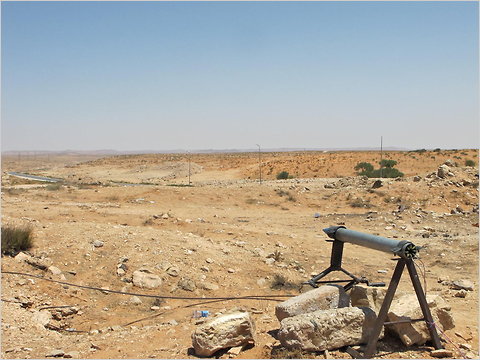Libya Snapshot: Why the Insurgents Are Struggling in the Advance on Tripoli (Chivers)
In recent weeks, our LiveBlog has documented the "tug-of-war" in the western Nafusa Mountains and the plains below them. The opposition has been able to get as close as 80 kilometres (50 miles) southwest of Tripoli, but then has been pushed back, with regime forces taking back towns.
C.J. Chivers, one of the best correspondents covering the conflict in Libya, writes for The New York Times:
The capture last week by Libyan fighters opposed to Col. Muammar el-Qaddafi of the mountain village of Qawalish signaled a shift in the front lines in the rebels’ slow advance toward Tripoli, Libya’s capital. It also provided a fine-grained view of the western rebels at war, offering insights into their leadership, logistics, tactics and conduct on the battlefield.
Some of what emerged was grim, including the aggressive and sustained looting and arson of Qawalish that followed the rebels’ entry into the town. (The arson continued on Monday. Almost a week after the town fell, two homes and an auto-parts shop were freshly ablaze.) These were crimes. But other rebel actions spoke to different elements of the character of opposition fighting units in the mountains — including the mix of enthusiasm, inexperience and initiative that has in turns both endangered the rebels and at times made them safe. In Qawalish, all of this could be readily seen.

Let’s begin with inexperience. Look at the photograph above, of a makeshift rocket launcher at the last rebel fighting position at the edge of town the day after Qawalish changed hands. Mounted on a stand, it pointed down the road toward the Qaddafi forces, which the rebels said were just a few kilometers to the east. If loyalist troops were to try to retake Qawalish, or send a patrol to test the rebel lines, this product of the mountain fighters’ workshops would be the rebels’ first line of defense.
You might look at that launcher and see signs of rebel pluck. You might also spot the mimicry of rebel ingenuity in eastern Libya or in Misurata. Here is what would seem to be a powerful weapon made of a captured piece of aviation ordnance, a few lengths of scrap iron and a section of metal pipe. With a motorcycle battery and electric wire for ignition, an air-to-ground rocket, recently lifted from the former government ammunition depot at El Ga’a, had become a jury-rigged ground-to-ground weapon that was complete and in position. And so, to passing eyes, this might be seen as a timely and menacing repurposing of government munitions by a rebel force that is gaining technical savvy as it moves toward Tripoli.
You might think that, at least, until you looked more closely. It’s not just that the weapon lacks sights, and therefore can only be pointed, and not aimed. The problems run deeper. Look closely. The warhead protruding from the pipe has been finished with a factory paint job in royal blue.

That blue is not just any blue. It is exactly the shade often used by NATO forces to indicate practice or inert ammunition. What that means is that this warhead is nonexplosive — a rocket of the sort manufactured for training. Removing the item for a brief inspection would tell the rest. This front-line weapon was an inert French-made 68-millimeter SNEB rocket for aircraft rocket pods.

 C.J. Chivers,
C.J. Chivers,  Libya,
Libya,  New York Times,
New York Times,  Qawalish
Qawalish 
Reader Comments